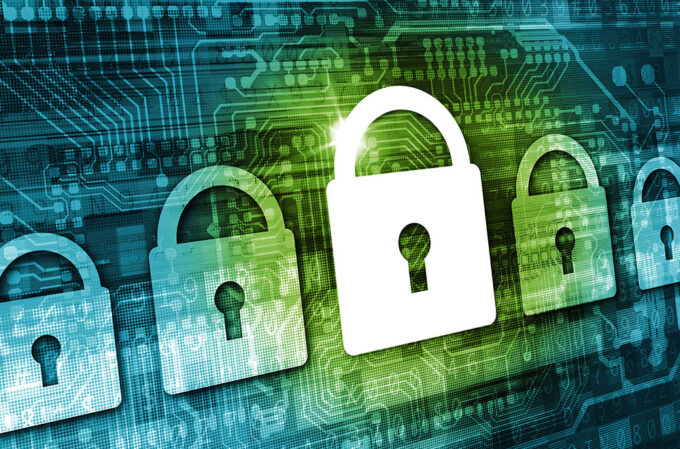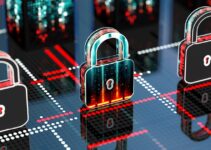The North American Electric Reliability Corporation (NERC) Critical Infrastructure Protection (CIP) standards constitute cybersecurity requirements aimed at enhancing the reliability and security of the bulk electric system (BES) in North America. These standards aim to mitigate the risks posed by cyber threats to critical infrastructure assets, including power generation facilities, transmission lines, and control systems.
The NERC CIP standards cover various aspects of cybersecurity, such as identity and access management, system security management, incident response and recovery planning, and information protection. These standards furnish a comprehensive framework for safeguarding critical infrastructure assets from cyber attacks, ensuring the reliable operation of the electric grid, and preserving the confidentiality, integrity, and availability of sensitive data.
Data Privacy Risks in the Energy Sector
The energy sector is a prime target for cyber attackers due to the critical nature of its infrastructure and the potential for significant economic and societal impacts resulting from disruptions. One of the key concerns in this sector is data privacy, as energy companies collect and process vast amounts of sensitive data, including customer information, operational data, and proprietary business information.
Unauthorized access to this data can have severe consequences, such as identity theft, financial fraud, and the potential for adversaries to gain insights into critical infrastructure operations. Additionally, the widespread adoption of smart grid technologies and the Internet of Things (IoT) devices in the energy sector has introduced new attack vectors and expanded the surface area for potential data breaches.
Cyber Threats and Grid Vulnerabilities

Source: blog.norcalcontrols.net
The energy sector faces a wide range of cyber threats, including advanced persistent threats (APTs), distributed denial-of-service (DDoS) attacks, malware infections, and insider threats. Such threats can target various components of the energy infrastructure, including control systems, supervisory control and data acquisition (SCADA) systems, and industrial control systems (ICS).
Cyber attackers may seek to disrupt energy operations, steal sensitive data, or gain unauthorized control over critical systems. Vulnerabilities in legacy systems, inadequate security controls, and the increasing integration of operational technology (OT) and information technology (IT) systems further compound the risks faced by the energy sector.
Securing Critical Infrastructure
Ensuring the security of critical infrastructure assets is paramount to maintaining the reliability and resilience of the energy sector. The NERC CIP standards provide a robust framework for implementing security controls and safeguarding critical systems and data.
Key measures for securing critical infrastructure include implementing robust access controls, maintaining comprehensive system and network monitoring, conducting regular risk assessments and vulnerability testing, and developing incident response and recovery plans. Moreover, adopting defense-in-depth strategies, employing advanced security technologies, and fostering a robust security culture within organizations is essential for warding off cyber threats.
Protecting Consumer Data and Privacy
Energy companies gather and process a substantial amount of consumer data, comprising personal information, energy consumption data, and billing details. Safeguarding this data is crucial for upholding consumer trust and complying with data privacy regulations, such as the General Data Protection Regulation (GDPR) and the California Consumer Privacy Act (CCPA).
Implementing robust data protection measures, such as encryption, access controls, and secure data handling practices, is essential for safeguarding consumer data. Additionally, energy companies must ensure transparency in their data collection and usage practices, provide clear privacy notices, and offer consumers control over their personal information.
Regulatory Challenges and Compliance
The energy sector operates within a complex regulatory landscape, encompassing multiple federal, state, and local regulations governing cybersecurity and data privacy. Complying with these regulations can be challenging, as requirements may vary across different jurisdictions and evolve rapidly to address emerging threats and technological developments.
Energy companies must stay up-to-date with regulatory changes, implement effective compliance programs, and maintain detailed documentation and audit trails to demonstrate adherence to relevant standards and regulations. Collaboration among regulatory bodies, industry associations, and energy companies is crucial for harmonizing standards, sharing best practices, and fostering a secure and resilient energy sector.
Emerging Technologies and Data Privacy

Source: tripwire.com
The energy sector is rapidly adopting new technologies, such as smart meters, renewable energy systems, and energy storage solutions. While these technologies offer significant benefits in terms of efficiency, sustainability, and grid optimization, they also introduce new data privacy concerns.
Smart meters, for example, can collect detailed energy consumption data, which, if not properly secured, could reveal personal information and behaviors. Similarly, the integration of distributed energy resources (DERs) and the increasing use of cloud-based services raises questions about data ownership, access controls, and the need for robust cybersecurity measures to protect sensitive information.
Best Practices for Data Protection
To effectively protect data and maintain consumer privacy in the energy sector, organizations should implement a range of best practices. These include:
| Best Practice | Description |
| Comprehensive Risk Assessments | Conduct regular risk assessments to identify potential vulnerabilities and assess the impact of data breaches or cyber-attacks. |
| Robust Access Controls | Implement strong access controls, such as multi-factor authentication, role-based access controls, and least-privilege principles, to restrict access to sensitive data and systems. |
| Encryption and Data Masking | Encrypt sensitive data at rest and in transit, and employ data masking techniques to protect personally identifiable information (PII) and other sensitive data. |
| Secure Software Development | Adopt secure software development practices, including code reviews, vulnerability testing, and secure coding guidelines, to ensure the security of energy management systems and other software applications. |
| Employee Training and Awareness. | Provide regular cybersecurity and data privacy training to employees fostering a strong security culture and raising awareness about potential threats and best practices. |
| Incident Response and Recovery Planning | Develop and regularly test incident response and recovery plans to ensure effective and timely responses to data breaches or cyber-attacks, minimizing the potential impact on operations and consumer privacy. |
Balancing Security and Consumer Rights
Striking the right balance between security and consumer privacy is a critical challenge for the energy sector. While robust cybersecurity measures are essential to protect critical infrastructure and sensitive data, these measures should not come at the expense of consumer rights and privacy.
Energy companies must be transparent about their data collection and usage practices, provide clear privacy notices and consent mechanisms, and implement robust data governance frameworks that respect consumer privacy preferences. Additionally, energy regulators and policymakers must work closely with industry stakeholders and consumer advocacy groups to develop guidelines and standards that ensure both security and consumer protection.
The Future of Energy Sector Cybersecurity

Source: navex.com
As the energy sector continues to evolve and embrace new technologies, the cybersecurity landscape will become increasingly complex. The convergence of operational technology (OT) and information technology (IT) systems, the adoption of cloud computing and IoT devices, and the rise of distributed energy resources will introduce new challenges and potential attack vectors.
Addressing these challenges requires energy companies to remain vigilant, continuously adapt their security strategies, and invest in advanced security technologies, such as artificial intelligence, machine learning, and blockchain. Collaboration among industry, government, and academia will be crucial for developing innovative solutions, sharing threat intelligence, and fostering a secure and resilient energy sector for the future.
Conclusion
In conclusion, the NERC CIP standards and data privacy considerations are intrinsically linked in the energy sector. Balancing security and consumer protection requires a holistic approach that integrates robust cybersecurity measures, adherence to regulatory requirements, and respect for consumer privacy rights. By implementing best practices, fostering collaboration, and staying proactive in addressing emerging threats and technologies, the energy sector can ensure the reliability and security of critical infrastructure while protecting sensitive data and maintaining consumer trust.
Frequently Asked Questions
What are the main cyber threats facing the energy sector?
The energy sector faces threats such as advanced persistent threats (APTs), distributed denial-of-service (DDoS) attacks, malware infections, and insider threats targeting control systems, SCADA systems, and industrial control systems.
Why is data privacy a concern in the energy sector?
Energy companies collect and process vast amounts of sensitive consumer data, including personal information, energy usage patterns, and billing details. Unauthorized access to this data could lead to identity theft, fraud, and privacy violations.
How do the NERC CIP standards help protect critical infrastructure?
The NERC CIP standards provide a framework for implementing security controls, such as access controls, system monitoring, risk assessments, and incident response planning, to safeguard critical energy infrastructure assets.



